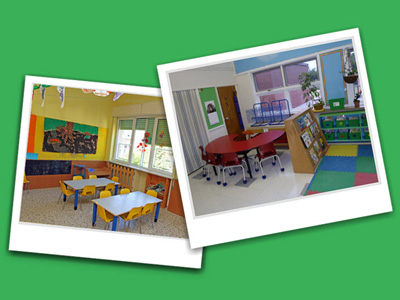 |
Growing as a Professional in School-Age Programs (Collection) |
2.00 |
Caring for school-age children in a school-age program is a relatively new field of work. The field itself is constantly changing and expanding. In view of this "newness" and change, those who work in the field are playing an important role in shaping and defining what it means to be a school-age professional. They are guiding school-age care as an emerging profession.
In the search for a definition of professionalism in school-age programs, it is helpful to examine the common characteristics of professionalism in other fields. The next step is identifying qualities and characteristics associated with professional behavior in the school-age field, itself. As a school-age professional, it is also important to understand the importance of acting as a public policy advocate on behalf of school-age children and their families.
An important part of professionalism is continued personal growth and development in relation to the field. This requires using appropriate resources and strategies to further individual professional development. It also requires considering what constitutes ethical conduct in the field and developing an ongoing commitment to ethical behavior. |
 |
Course 10: School-Age Care as a Family Service – Part Two |
2.00 |
The foundation for getting parents involved in school-age programs is to keep parents well informed about what is happening in the program. Quality programs also provide parents with opportunities to make suggestions and give feedback on program services through suggestion boxes, feedback forms, and surveys. When parents are encouraged to have input in the program, they develop trust and confidence in the program and feel a sense of pride and ownership. They are much more likely to participate as resourceful partners with program staff when they know their ideas are welcome and valued. Finally, because parents are all different from each other, it’s important to provide many different opportunities for them to connect with the program. Staff in quality school-age programs recognize that all parents don’t have to be involved in the same way. |
 |
Course 31: The Six "Ps" of Marketing School-Age Programs |
2.00 |
Effective marketing of OST programs is a systematic process that involves research, analysis, assessment of market trends and needs, short-term and long-term planning, and development of effective strategies to promote OST program services and develop a positive image of the program in the community. It is important for OST leaders to recognize that marketing is a far reaching process that includes, but is not limited to, advertising and publicity. When OST leaders take a comprehensive approach to marketing, their programs and projects have an excellent chance of success. Knowledge and understanding of the marketing process is an invaluable tool for OST leaders as they plan and implement new programs and projects, assess the stability and need for improvement of current programs, develop plans for new or expanded programs, and develop a positive public image of the program and its services. |
 |
Course 19: Involving School-Age Children in Activity Planning and Implementation |
2.00 |
As they grow and change and move toward independence, school-age children and youth become very interested in planning and directing their own activities. This means it’s very important for staff to think of ways to involve them in program planning and implementation. By planning activities WITH children instead of FOR them and engaging them in creating the program environment, staff can help children develop a feeling of ownership of the program – a positive feeling that the program belongs to them. |
 |
Course 15: Designing Effective Indoor School-Age Play and Learning Environments |
2.00 |
Planning effective environments is the first step to planning an effective program. When environments are attractive, interesting, and comfortable, they provide a backdrop for a varied program that can address the developmental needs of school-age children. The look and feel of well-planned environments send messages that let children know they are welcome and valued. They are inviting and encourage children to get involved and stay engaged with program activities and experiences |
 |
Current Trends and Issues in Out-of-School Time Programs (Collection) |
2.00 |
It is important for OST professionals to understand how the field has developed since its inception and to be knowledgeable about the current status of the OST field. With this knowledge and understanding, it is possible for OST professionals to participate in shaping the field as it grows in the future.
The field of OST is growing and changing as national researchers learn more about what works best in OST programs for a wide range of children and youth, their families, and their communities. Other positive changes are occurring as advocates for OST succeed in creating more public awareness about the need to make quality OST services available to all children and youth across the country. In addition, the OST field is undergoing a metamorphosis as experienced professionals in several different disciplines and fields share and contribute their knowledge, skills, and insights with the goal of creating national models that represent the best possible OST programs.
In this climate of change, OST programs face a number of important issues, revolving around the availability, affordability, and accountability of programs. Many national trends and issues have implications for OST at the state and local level. When OST professionals are well informed about national developments in the field, they can become more effective OST advocates as they design and implement high quality, sustainable programs that are responsive to youth, family, and community needs. |
 |
Emergency Animal Recall - Tigers |
2.00 |
Welcome to Emergency Animal Recall. This collection consists of an overview course which covers the fundamentals of Emergency Recall training for exhibit animals, including:
What exactly is Emergency Animal Recall, and why is it necessary?
What are the benefits of Emergency Animal Recall?
How do you generate support within your organization for a training program, and how do you decide which animals should be trained first?
What equipment will you need, and what preparations will you need to make?
What is the general outline of an Emergency Recall training program, and how do you maintain the conditioning once it has been established?
After completing this Overview, you can continue with the species-specific Tigers Emergency Animal Recall course. |
 |
Course 34: Creating Community Collaborations |
2.00 |
Across the country, more and more communities are forming community collaborations to address the out-of-school needs of children and youth of all ages. When different segments of the community join together, share ideas, and pool their resources and efforts to create OST initiatives, children and youth benefit. What one organization or program may not be able to accomplish alone, is often achievable when partnerships and collaborations among diverse groups and individuals are formed.
When OST professionals are knowledgeable about what it takes to create and sustain successful collaborations, they can play an important leadership role in creating OST initiatives and programs that will meet the needs of children and youth in their communities now and in the future.
|
 |
Birds |
2.00 |
This course will provide an introduction to birds, including an overview of physical characteristics, habitat, behavior, reproduction and the conservation efforts dedicated to protecting this taxonomic group. |
 |
Guiding School-Age Children in Groups (Collection) |
2.00 |
When large numbers of children are involved in the program, it is challenging to create and deliver school-age program activities that can meet the needs of all children. The key to success is taking a systematic approach to program planning. It is important for staff to understand how to select appropriate activity options and use effective management strategies that make it possible to offer a balanced variety of simultaneous activity options. This understanding will help staff plan and implement a program that effectively supports, nurtures, and guides individual differences and fosters positive interaction among children in groups. |











